In most cases, runners feel that they don’t need to do any exercise other than running to achieve perfection and stay in the perfect from. But to tell the truth, a lot of hard work goes in to become a complete runner and strength training adds that extra boost to running which helps to transform the running into flying. Runners and sprinters top the list of most frequently injured athletes. But even a small amount of strength training at the end of your training session only 2 times a week can go a long way in preventing injury and improving structural fitness.
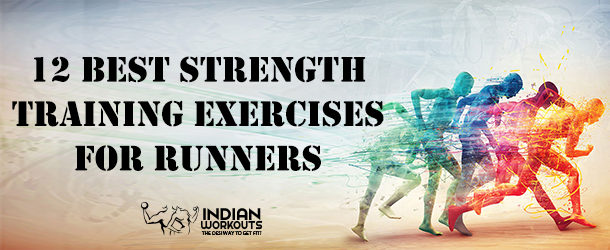
6 Benefits of Strength Training For Distance Runners
Whether you are new to sprinting or have been running marathons for years, strength training exercises will help you to be a more organized runner.
Increase Efficiency – Strength training exercises strengthen the core and improve running form so that you don’t feel fatigued or exhausted.
Burn More Calories – Strength training boosts metabolism so that you will burn more calories during workouts and achieve the perfect form before the D-day.
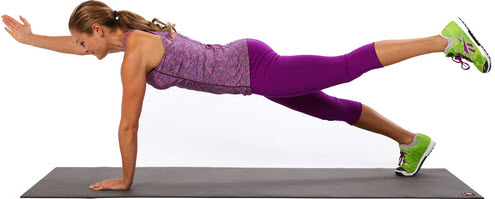
Increase Endurance – Strength training tones the muscles to perform longer and trains the body to deal with the stress of running in a better way.
Helps to Run Faster – Increased endurance through strength training also leads to an overall increase in pace and speed so that you can run faster.
Reduced Risk of Injuries – Strength training exercises for runners includes lower body and core exercises which help to reduce injuries related to running, especially knee, and hip injuries.
Running will be Smoother – Adding strength training to the training routine will help to strengthen the leg muscles and make it easier to run for longer without fatigue, stress or pains.
12 Power-packed Strength Training Exercises which Runners Can’t Miss
Consistent practicing of these strength training exercises will definitely help runners and sprinters to run faster and stronger even if they have been detached from training for some time. These are the perfect exercises to prepare the base for a marathon.
Forward Lunge
The legs are the most important body part that a runner needs to train and strengthen and the classic lunge is one of the best leg strength exercises that targets the buttocks and hamstrings. But the Forward Lunge is an effective variation that also works the quads and glutes and increase he range of motion of the hip flexor. This exercise that helps to open up tight hip flexors is especially useful for getting an efficient running form.
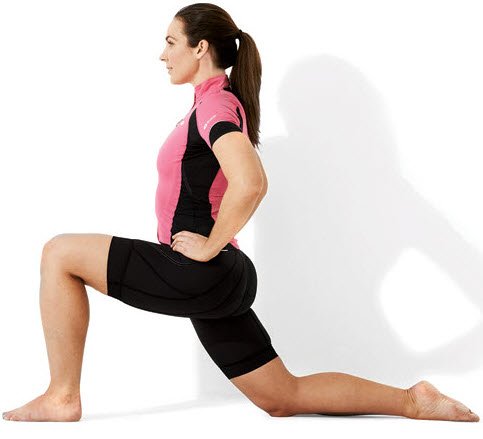
How to do it – Begin in an upright position and take a step forward with the right leg such that the knee is placed over the ankle and lowers the body until the left knee just brushes the ground. Now, get up, step back and repeat the same on the other side. Do 5 reps with each leg before moving on to the next exercise.
Lunge Twist
This is yet another of the classic lunge exercise that is one of the functional weight training workouts which uses the entire body weight to strengthen the core and the leg muscles. This specific lunge variation is more useful for the core because it requires balance and the awareness of how the body is positioned. It targets the quads and glutes and helps to build lower body strength and balance.
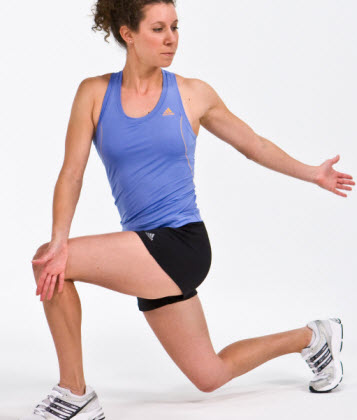
How to do it – Begin in a forward lunge and then turn your torso to the same side that you lunge forward with. Stay in the position for a few seconds and then get up and step back. Repeat the same on the other side. Continue 5 repetitions on both sides and then move on to the next exercise.
Lateral Lunge
The Lateral Lunge is an essential lower body workout for all runners because it works and strengths almost all the muscles of the legs and hips. This workout is also known as the side lunge, and it helps to activate the abductors and hip stabilizing muscles. In addition, it works the hip flexors, quads, calves, hamstrings, and glutes. This is a power core strength training move that no runner can afford to miss.
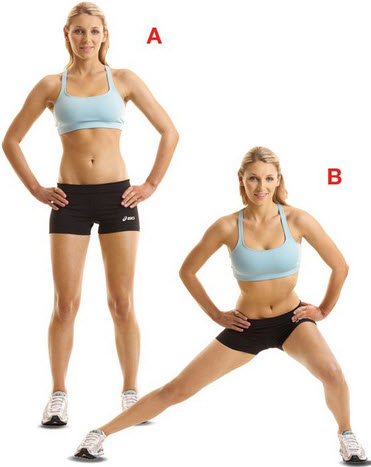
How to do it – Begin in an upright position with feet closed, now step 3 to 4 feet out to one side with one foot while pushing the hips back and keeping the back and chest engaged. Lunge down and ensure that the knee stays over the ankle at all times and the standing leg remains straight. Hold for 10 seconds and then get back to the standing position while engaging the glutes. Repeat on the other side. Do 5 reps for each leg.
Diagonal Lunge
The Diagonal Lunge is more of a simplified version of the classic lunge which can be practiced even by beginners. It is one of the functional strength training workouts for runners that work the quads, hamstrings, and glutes. You can notch up the difficulty level of this exercise by holding two dumbbells in both hands.
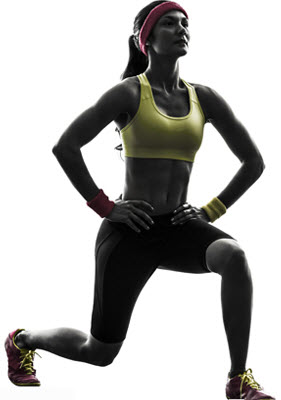
How to do it – Stand upright with your legs placed hip-width apart, now take a large diagonal step forward with one foot and bend the rear foot in order to lower the body to the floor. Your front knee should form a 90-degree angle. Hold the pose for few seconds and go back to the standing position. Repeat the same with the other leg. Do 5 repetitions with each leg for best results.
Reverse Lunge
The Reverse Lunge is one of the useful moves for strength training for women as well as men. It can be a bit difficult because it calls for more balance and requires the complete engagement of the glutes. It helps in thorough hip extension but puts less stress on the knees. It also helps to tone and strengthen the muscles and ease the stiff joints.
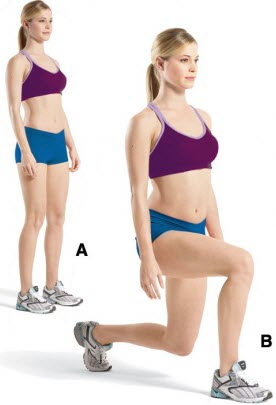
How to do it – Stand erect with both feet placed side by side and take a step back with your right leg. Lower your body till the right thigh in almost parallel to the ground and the left knee brushes the ground. Keep the toes pointed straight ahead. Hold the pose for a few seconds and then step back and repeat the same on the other side. Do 5 repetitions with both legs.
Lateral Step Up
The Step Up may look like a modest and simple exercise, but it works intensely to work the core muscles, quads, hamstrings, and glutes. It specifically targets the quads and straightens the legs for a better run. The Lateral Step Up is an advanced variation of the classic step up exercise that can be done using free weights.
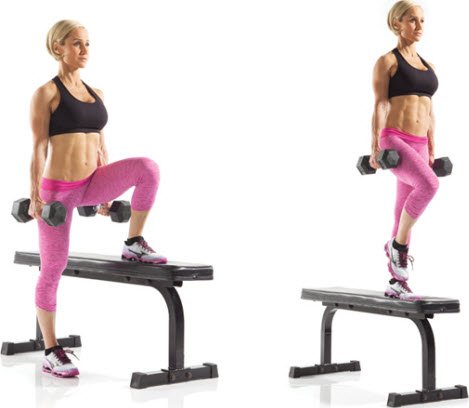
How to do it – Stand straight adjacent to a 2 to 3-foot high bench or stool holding a 10 pounds dumbbell. Now, step the inside foot onto the bench and step all the way up by engaging the core and glute muscles while keeping the outside knee at a 90-degree angle. Stay in this state for 2 seconds and then come to the starting position. Repeat the same with the other foot. Repeat this workout 10 to 15 times on each side.
Pistol Squats
Next is the squat exercises which are considered the mother of all strength training exercise. It helps in both lower body as well as upper body strength training using body weight. The pistol squats is a difficult variation of the classic squats and it crucial for runners because it is a single-leg workout which meets the demands of running and sprinting and preventing asymmetrical imbalances.
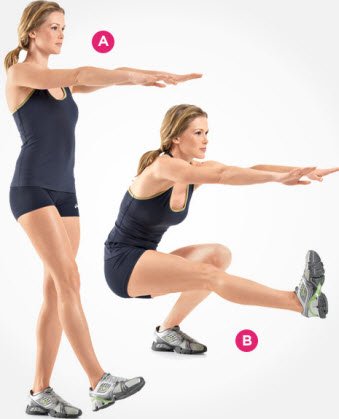
How to do it – Stand straight with your body weight on your right leg and arms stretched out in front. Now, steadily squat down in such a way that your right thigh remains almost parallel to the floor. Keep your movement controlled throughout the workout. Return to the standing position and repeat the same on the other side. Do 5 repetitions with each leg.
Bulgarian Split Squats
Yet another power-packed variation of the classic squat is the Bulgarian spit squat with is considered one of the essentials of strength training for runners and athletes. It works the quads, glutes, core and claves. This particular squat exercise can be used as a supplemental workout for balancing weakness in one leg or hip, building stronger glutes and improving hip stability.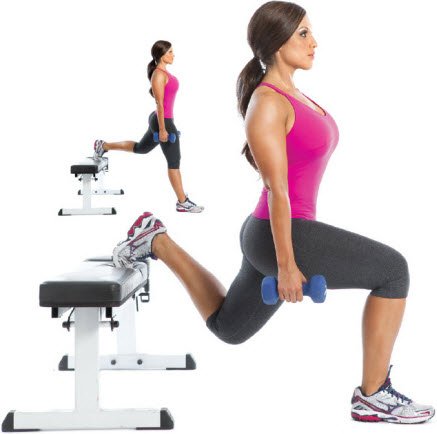
How to do it – Begin in a lunge position with the back foot resting on a 1 to 2-foot high bench or box and lower the torso straight towards the ground by bending the front knee. Make sure the front knee does not move forward beyond the toes. Your forward thigh should be parallel to the ground. Maintain this position for 2 seconds and then slowly return cack to a neutral position. Usually, 10 to 15 repetitions on each leg are required to create the burn.
Single Leg Dead Left
The glutes and hamstrings are two of the most important muscles that are often neglected during strength training workout sessions. But training these muscles is critical for enhancing stabilization and power while running. The deadlifts are an essential part of bodyweight strength training which targets the glutes and hamstrings and helps to train each side of the body without favoring or over-compensating any particular side.
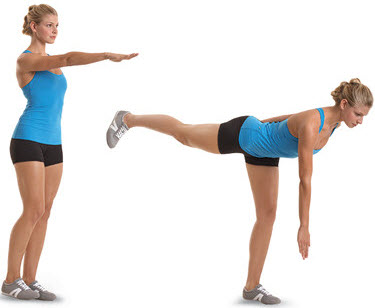
How to do it – Stand erect with both feet placed together, now bend forward from the hip while standing on your left leg and stretching your right leg straight behind you for maintaining balance. Hold the posture for 2 to 5 seconds and return to the standing position by engaging the glutes. Repeat on the other side. Do 5 to 10 repetitions with each leg.
Push Ups
Training the upper body is as important as training the legs and what better way to do the same than with the help of classic push ups? Push up is by far the best strength training workout that occupies an important place in workout regimes of professional athletes, runners, and bodybuilders. It works the chest, core, biceps, triceps and back muscles – all at the same time which is essential for building a better foundation for running. But it is important to do the push ups with a slow and controlled movement in order to fire up the muscles more effectively.
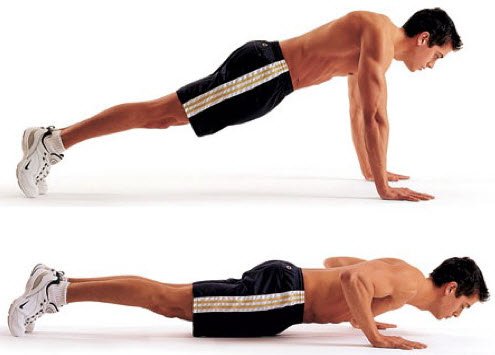
How to do it – Begin in a classic plank position with the hands placed 2 or 3 feet apart under the chest. Bring your body down towards the floor by bending the elbows until the chest almost touches the ground, wait for 2 counts and then rise back to the starting plank position. Repeat 10 to 15 times at a time.
March Bridge
It is extremely important for runners to ensure hip stability which in turn helps to keep the leg stable during every stride by providing power and maintaining perfect posture. The best way to ensure hip stability is through glute bridge exercise. The March Bridge is a smart variation in the classic glute bridge which focuses exclusively on the hips.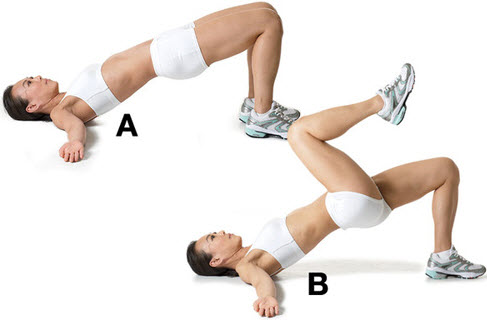
How to do it – Lie face up with your feet placed flat on the ground and knees bend. Raise your hips up off the floor by pushing through your heels and contracting the glutes so that your body forms a line from the shoulders to the knees. Now, raise one leg up and hold for 2 to 3 seconds, put it down and raise the other leg, hold for 2 seconds and put it down. Make sure that your hips don’t sag towards the ground at any time. Repeat it 10 times on both sides.
Plank
Last but not the least is the Plank that helps to work the abdominal and oblique muscles which in turn helps to maintain a neutral pelvis while running. It helps to prevent injury while running. It also works the shoulder and back muscles. It helps to improve stride, from and speed.
How to do it – Come to a push-up position with your hands placed under the shoulders. Keep the body in one line from head to heels. Keep the abs engages and lift the chest to create space between the chest and the ground. Stay in the plank posture for 30 to 60 seconds and then come to a resting posture. Repeat it 3 to 4 times.
So, now that you know that it requires something more than just running in order to be the best and most efficient runner, combine these effective strength training exercises in your training routine to overcome all odds and barriers.